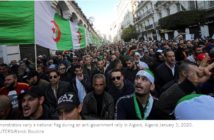World Affairs Journal

With all the to-do over the US military’s decision to allow women in combat, it’s worth noting that women of other nations are already on the front lines in the Middle East and elsewhere—even if they’re not in uniform.
No, this is not where I defer to sexy media photos of young female protesters courageously defying government tanks in recent Arab unrest, despite the bravery on display.
This is about a far more undercover conflict: the fight over female identity in Arab and Muslim societies. What does that mean? That means family dinner conversations about mom’s participation in political protests, for example; it means little girls starting to tell little boys it’s not okay to hit them; it means young ladies asking why they’re still making their brothers’ beds for them.
In an area of the world ravaged by revolution and years of warfare, social changes can be easy to miss. But underneath all the political turmoil in the region, some traditions are being challenged. This is radical. The traditional ideal of the Muslim woman has, to some degree, fallen from her pedestal—and into a heated conversation over her rights, her values, her place in a predominantly Islamic society. (That’s not to say that Christian women living in the region are not faced with similar questions, but merely to acknowledge the region’s dominant religious inclination.)
Whether it’s due to personal life experiences, or more progressive interpretations of the Koran, or technology, or the opening up of society, women in the region are slowly moving forward. Here’s a few examples of how that’s happening:
- Afghanistan’s first female-only cyber cafe opened its doors recently in Kabul thanks to the grassroots women’s rights organization YoungWomen4Change, founded April 2011. The group says it is “committed to empowering Afghan women and improving their lives through social and economical participation, political empowerment, awareness, and advocacy” and by “promoting gender equality, empowering women, and increasing Afghan women’s social participation.”
- In Egypt, a graffiti project used street art to challenge gender and racial stereotypes thanks to BaheyaYaMasr, an Egyptian women’s rights movement established after the uprising against Hosni Mubarak. The group regularly holds anti–sexual harassment protests in Cairo, often working in tandem with another new initiative,HarassMap, a service that uses text messages to alert women about risky areas.
- In Syria, the group Syrian Women in Support of the Intifada (meaning the uprising against President Bashar al-Assad), founded in the spring of 2011, says it seeks a “society that establishes equality among its citizens regardless of sex, ethnicity, or sect.”
- In conservative Saudi Arabia, a new art exhibit from Egypt called “The Veil,” a reference to the Islamic headscarf, just opened. The latest in a string of provocateurs challenging perceived norms there, the daring Saudi artist Sarah Abu Abdallah is among those with work in the exhibit.
- What about body image? Feminists have long been pushing against anorexia-linked ultra-thin female models in the West, but Israel is actually ahead of the game. Knesset member Rachel Adato recently pushed through a law banning underweight models from the runways in one of the first efforts to penalize the fashion industry for potentially aiding the spread of anorexia and other eating disorders growing among young women. The law also bans advertisers from digitally altering photos in fashion and advertising photography.
- Bringing even more nations together is the “Uprising of Women in the Arab World” group, which is hugely popular—their Facebook page alone has over 91,000 likes. Such work represents a critical call to unity in an oft-divided region, the stated goal being: “the full application of the Universal Declaration of Human Rights for Arab women just as for men.”






